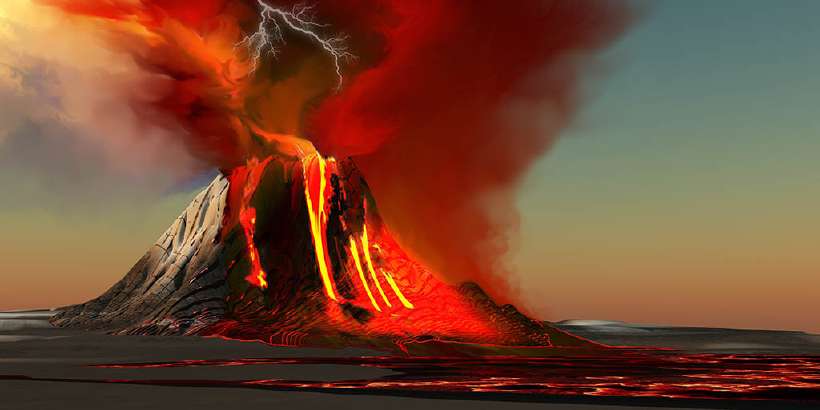What is nature’s most powerful, most destructive, most dangerous form? Some would say an earthquake, others a cyclone. However, these phenomenon are relatively smaller and less destructive in scale compared to the fury of a volcano.
Fourteen miles southeast of Naples in Italy, lie the remains of an ancient town called Pompeii. The city flourished under the shadows of the towering Mount Vesuvius. In 79 AD, the volcano erupted, destroying the cities of Pompeii, Herculaneum, Stabiae and Torre Annunziata.
![What is a Volcano [Illustration by Shinod AP]](/media/5wh-163_1_hua9c58847500346c6d6140e8465b3309b_8169_820x0_resize_q60_box.gif)
Mount Pelee, another volcano, arose from sleep in 1902 and wiped out the city of St. Pierre and its 30,000 inhabitants completely. The story of Mount St. Helens is even more terrifying. On 18 May, 1980, after days of volcanic activity, Mount St. Helens erupted.
An avalanche of hot gases, rocks, ash and ice swept across the landscape at a speed of more than 250 kilometres per hour (160 miles per hour ) destroying 550 square kilometres (210 square miles) of mountain terrain, which is equal to an area almost as big as a small city. The area was home to an amazing diversity of plant and animal life.
The volcanic matter went up to a distance of 20 kilometres in the sky, spewing gas, steam and ash straight into the stratosphere (one of the lower layers of the earth’s atmosphere).
Let us try and understand what a volcano is.

The earth has several layers under the surface. The upper crust on which we stay is called the lithosphere. Deep inside the earth’s body is the magma, which basically comprises rocks and other materials in a super heated state.
Most things when heated to a certain point, melt and then turn into gas. So, the earth’s crust has a lot of gas which is constantly expanding, thus increasing the pressure inside.
This magma tries to break through any weak spot on the earth’s surface. A volcano is basically this weak spot. It is a vent or a hole in the earth’s crust through which molten magma, gases and rocks are forced out because of the high pressure inside.
In other words, the earth is like a pressure cooker of magma and hot gases. Whenever the pressure becomes too high, it forces some of its insides out. This is a volcanic eruption.
Types of volcanoes
Volcanoes are broadly classified into two categories based on the modes of eruption. They are the fissure and central types.
In a fissure volcano, the magma oozes out of large cracks in the earth’s crust. The magma flow is not violent and its deposition forms new land forms like plateaus and even new islands.
A central volcano is one in which the magma comes out of a small area on the earth’s crust called the volcanic crater. This is generally very violent in nature.
Volcanic eruptions mould and shape the earth’s structure. They give rise to new land masses and constantly create changes in the earth’s atmosphere.
523 words |
5 minutes
Readability:
Grade 8 (13-14 year old children)
Based on Flesch–Kincaid readability scores
Filed under: 5ws and h
Tags: #volcanoes, #nature, #gases, #pressure, #magma
You may also be interested in these:
The Hot and Sizzling Volcano
Abdul Kareem's Forest
Volcanoes
Why does Cola Fizz?
How does a Submarine Work?